Have you ever thought about the best way to reward your customers for their loyalty? While you could stick to traditional methods such as giving 10% back on all purchases, you could also offer unique and exciting experiences of access to an exclusive event. Let’s start by defining each of these rewarding methods before diving into when and why you should use each for your business.
The difference between transactional and experiential rewards
Understanding the difference between transactional and experiential rewards is the key to deciding which type is most valuable to your customers.
Transactional rewards
Whether you know it or not, you’re probably already very familiar with this type of reward. From free shipping to dollars off, these rewards are extremely common in customer loyalty programs, and are quite popular with many types of shoppers.
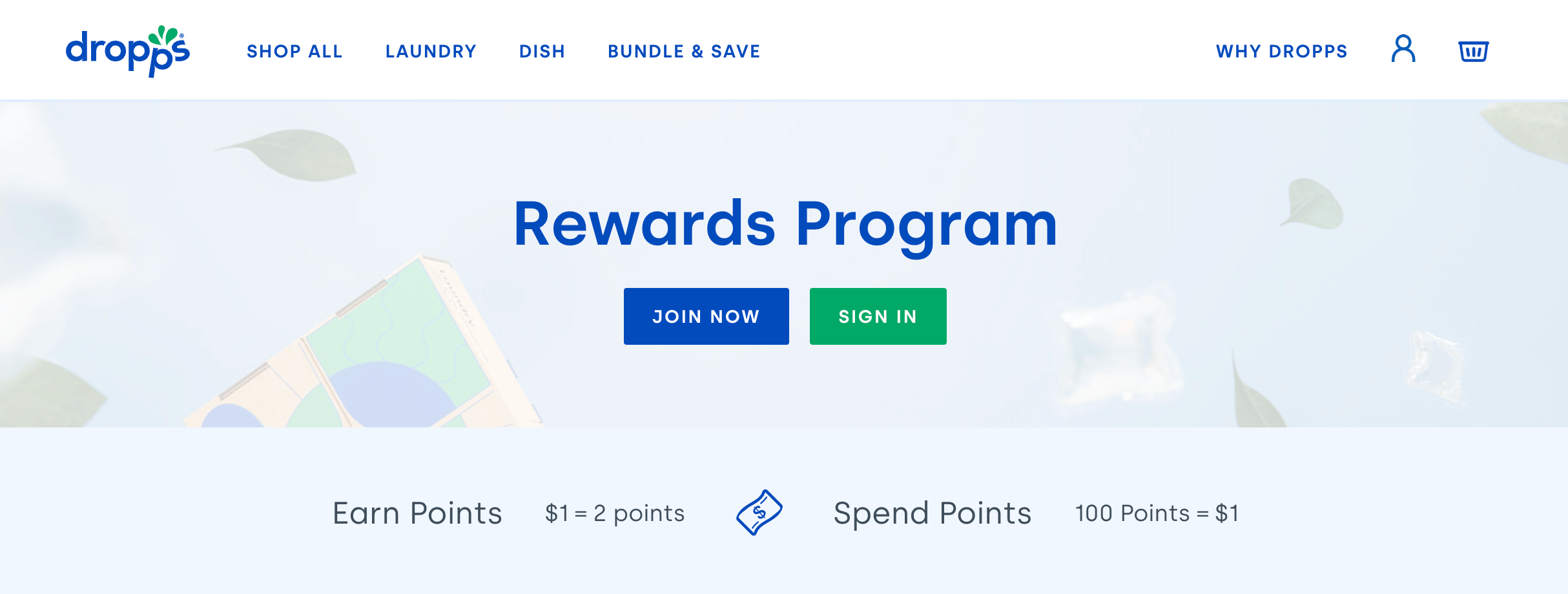
Green cleaning brand, Dropps, uses a points program to reward customers for each dollar they spend with dollars off their future purchases. Once customers have earned 500 points through purchases and other earning activities like social media engagement or signing up, they can save $5 on their next purchase.
This is a classic example of a transactional reward that makes it easy to understand why they are so popular. Customers love them because they help save money and businesses love them because they encourage repeat purchases.
Experiential rewards
Unlike transactional rewards, this type of reward goes beyond a dollar value to improve the larger customer experience. Think private event invites, early access to new products or sales, access to product test panels, and more.
Nordstrom is a global leader when it comes to creating unforgettable experiences for its loyal customers. Nordy Club members can work their way up three tiers from Member to Ambassador, earning more exclusive rewards along the way. Program members receive first access to its iconic anniversary sale, a treat that true fashion lovers look forward to. They don’t stop there, though. The fashion retailer offers other experiential rewards such as lifestyle workshops, priority access to fashion shows and events, in-home stylist visits, and more!

The pros and cons of transactional rewards
Let’s take a closer look at transactional rewards, what they have to offer, and where they fall short.
Pro: they provide easy-to-see value
Transactional rewards are the best way to show customers the value of your rewards program quickly. Receiving $10 back after spending $100 is a very tangible return on investment that’s not only easy to understand but also helps justify additional purchases. These rewards give customers extra bang for their buck, making your brand very appealing when compared to competitors who don’t offer any additional value per purchase.
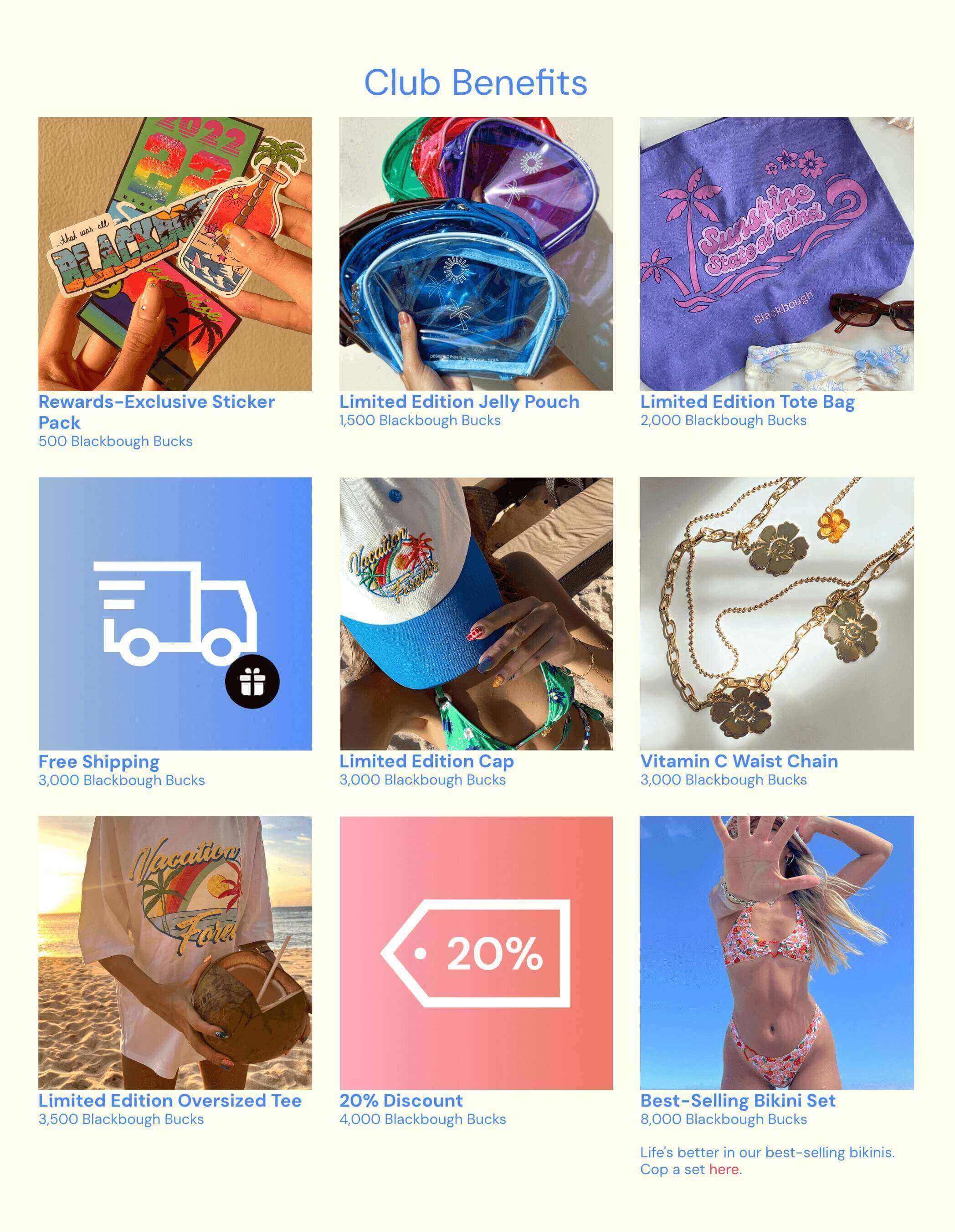
Blackbough Swim’s explainer page shows customers what their points are worth before they even join the rewards program. By being very transparent with what its program can offer, you understood how it works and can sign up in less than a minute. This is very valuable for Blackbough Swim because it allows it to maximize the number of customers who become loyal members of its program.
Pro: they’re easy to implement
Another benefit of using transactional rewards is that they are easy to set up, especially if you’re running a points program. Building a points program allows you to automatically award points for many different actions (including purchases, social shares, and more) and gives customers the ability to spend the points they earn on store credit through amount-based discounts, percentage-based discounts, free shipping, free products, and more.
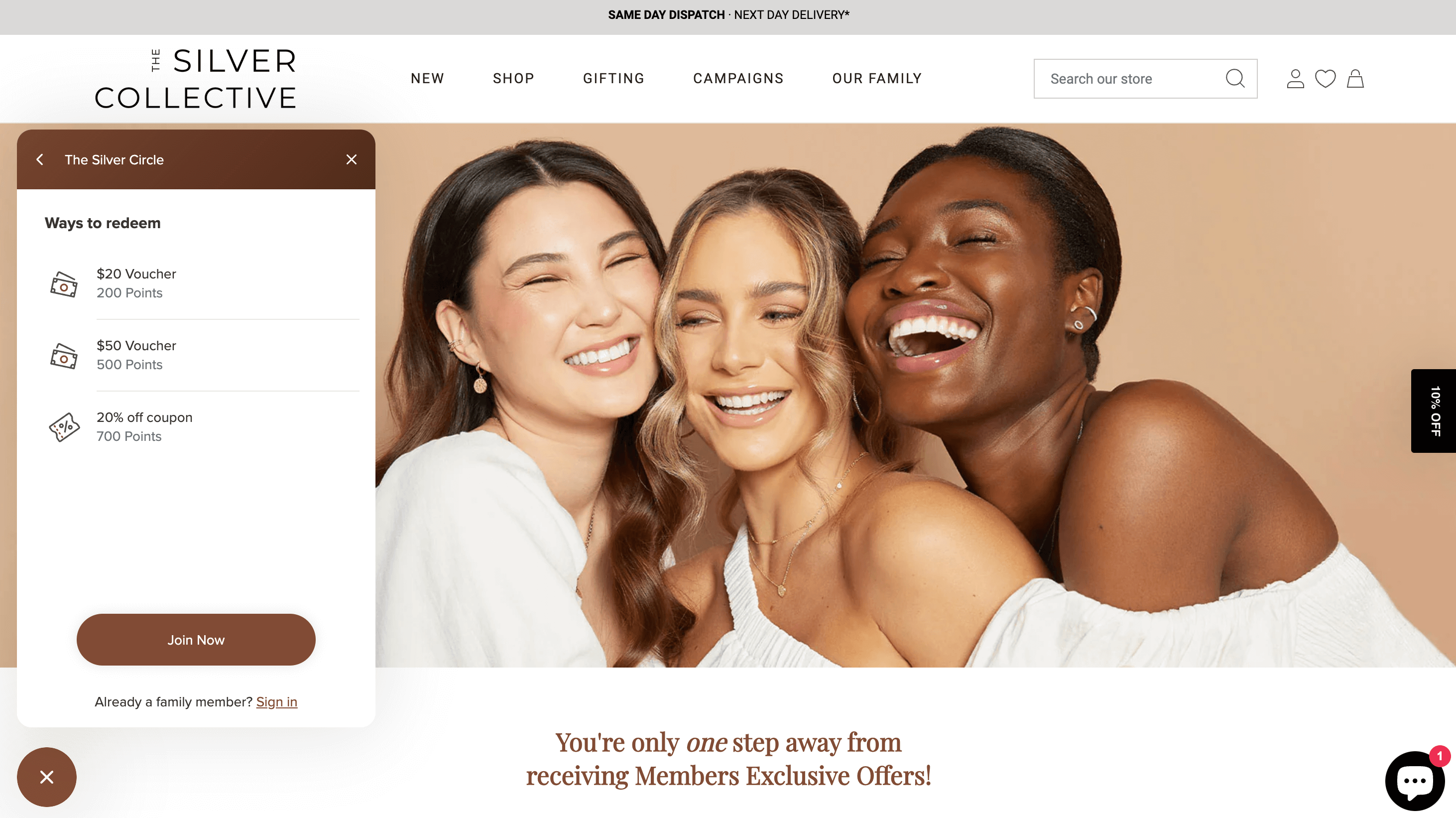
With their Silver Circle program, The Silver Collective was able to quickly build a points program that rewards customers 1 point for every dollar they spend. These points are very valuable because they give shoppers the chance to unlock rewards that save them money on their next order. This earning and redemption cycle is handled automatically through The Silver Collective’s Smile rewards program, which generates an easy-to-find rewards program launcher displayed on every page, creating an effortless rewards experience for both the customer and the brand.

Pro: they avoid the dangers of discounting
A lot of businesses wrongly turn to discounts to convince more customers to make purchases. Whereas discounting can lead to a dangerous death spiral, offering money-saving rewards doesn’t.
Offering rewards as an incentive to shop with you is beneficial for both your brand and your customers.
Your customers receive additional value with each purchase, and you’re able to encourage customers to perform several profitable actions, such as making purchases, sharing your store on social media, and writing product reviews. Traditional discounts on the other hand simply condition customers to expect cheaper prices for your products.
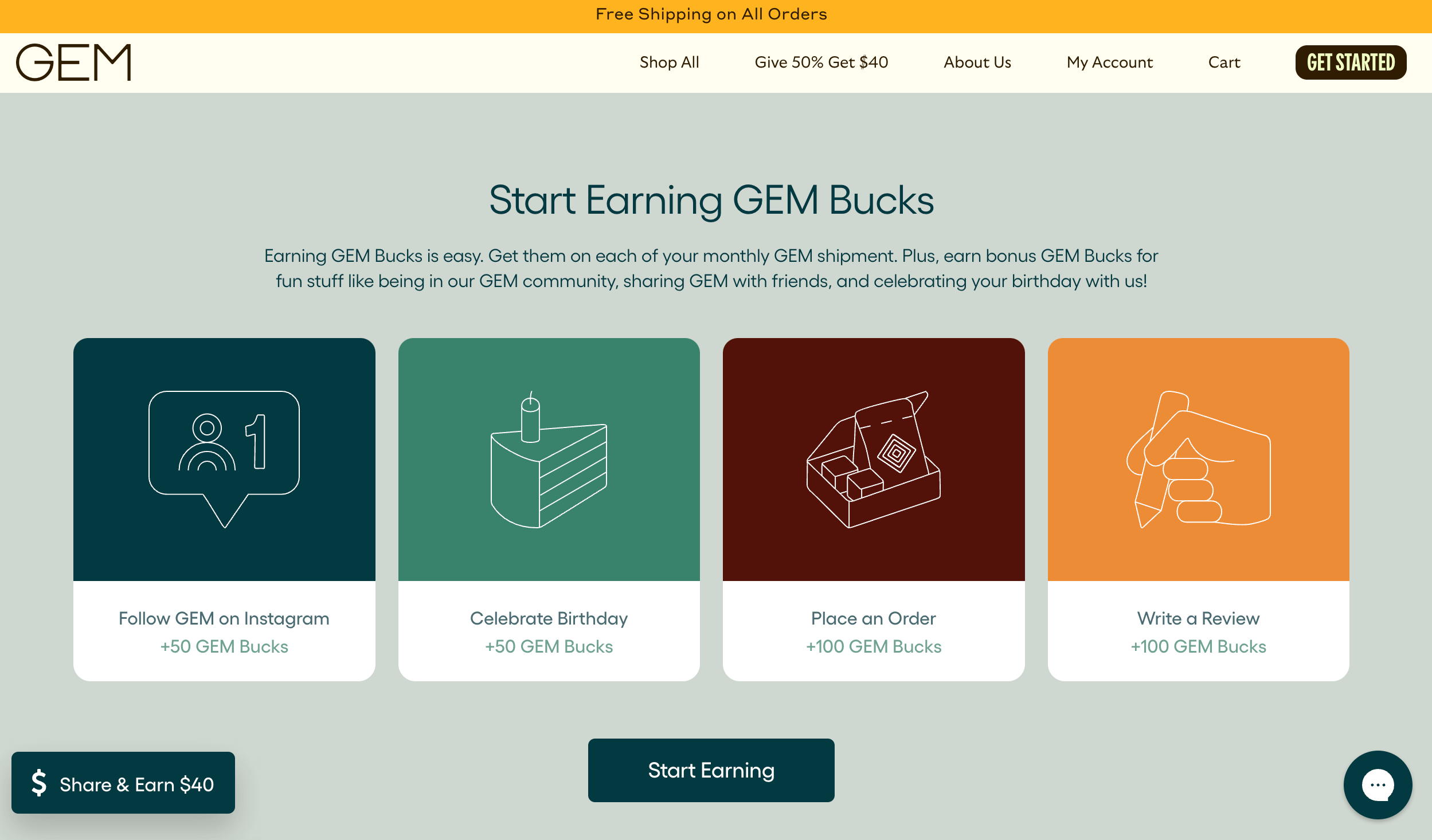
Rather than simply handing out a $10 coupon or a free product, GEM gives its customers many different ways to earn it. This makes the entire process more engaging and creates a better connection with their customers since they need to interact with the brand to receive it. Even though customers are receiving the same coupon value in both scenarios, GEM is building a stronger community by providing accessibility to its products through its rewards program, GEM Bite Club.
Con: they’re not unique
One of the biggest downsides to transactional rewards is that most businesses with reward programs are already offering them. Considering the pros it’s easy to see why, but that also means that you won’t be the only business offering additional value in your industry. Customers will have equal incentive to choose you or your competitors, making your program’s branding and marketing a higher priority to help you stand out.
Con: they’re not exciting
Another minor problem with transactional rewards is that they can become stale over time. If you’re only ever receiving $5 back on $50 orders, the earning and redemption process becomes predictable and loses its novelty after it’s been accomplished a few times.
This phenomenon can be explained by the Law of Diminishing Marginal Utility, which states that “the more you consume a good or use a service, the less satisfied you will be with each successive use.” To ensure the longevity of your program, diversifying your rewards becomes crucial.
Con: they can be expensive
It’s also important to consider that transactional rewards can add up. Since you have a direct financial obligation to uphold discounts and free shipping charges, you need to be aware of how many rewards you’re issuing and how quickly customers are redeeming them.
That being said, this isn’t a reason to not offer transactional rewards. As we saw earlier, transactional rewards can be highly motivating to value-centric customers — you just need to award them carefully.
The pros and cons of experiential rewards
Just as with transactional rewards, experiential rewards have their benefits and flaws. Let’s dive into it.
Pro: they provide a memorable experience
One of the best things about experiential rewards is that they provide a more memorable experience and establish a deeper connection with your customers because they are more personalized than financial rewards.
Since they can be tailored to the interests of your customers, this type of reward creates a positive emotion for a longer period than a transactional one does, which gets your customers coming back again and again. When a customer is faced with the decision of shopping with a competitor or returning to your business, they will remember the positive experience they had with your brand and the decision becomes a no-brainer.

While Marriott is famous for its exceptional customer service and global portfolio of hotels, its rewards program Marriott Bonvoy is just as iconic. Perhaps most notable is the Marriott Bonvoy Moments element. Customers can save their points over time and bid on once-in-a-lifetime experiences like a private session with US Women’s Soccer star Trinity Rodman, or tickets to concerts at iconic venues like Madison Square Garden in New York City or Mercedes Benz Arena in Berlin, Germany. Once you know an experience like that is up for grabs, it’s nearly impossible not to be motivated.

Pro: they help your brand stand out
If you made a large purchase at a sports store, which of these rewards feels more tailored to you? Receiving a $5 coupon towards your next purchase or receiving an exclusive invite to a meet and greet with baseball superstars?
This is another key strength of experiential rewards. Since they can be virtually anything you want, they give you the flexibility to offer rewards that are truly customized to your customers. Rooted in what makes your brand unique, they deliver one-of-a-kind experiences your customers simply can’t get anywhere else.
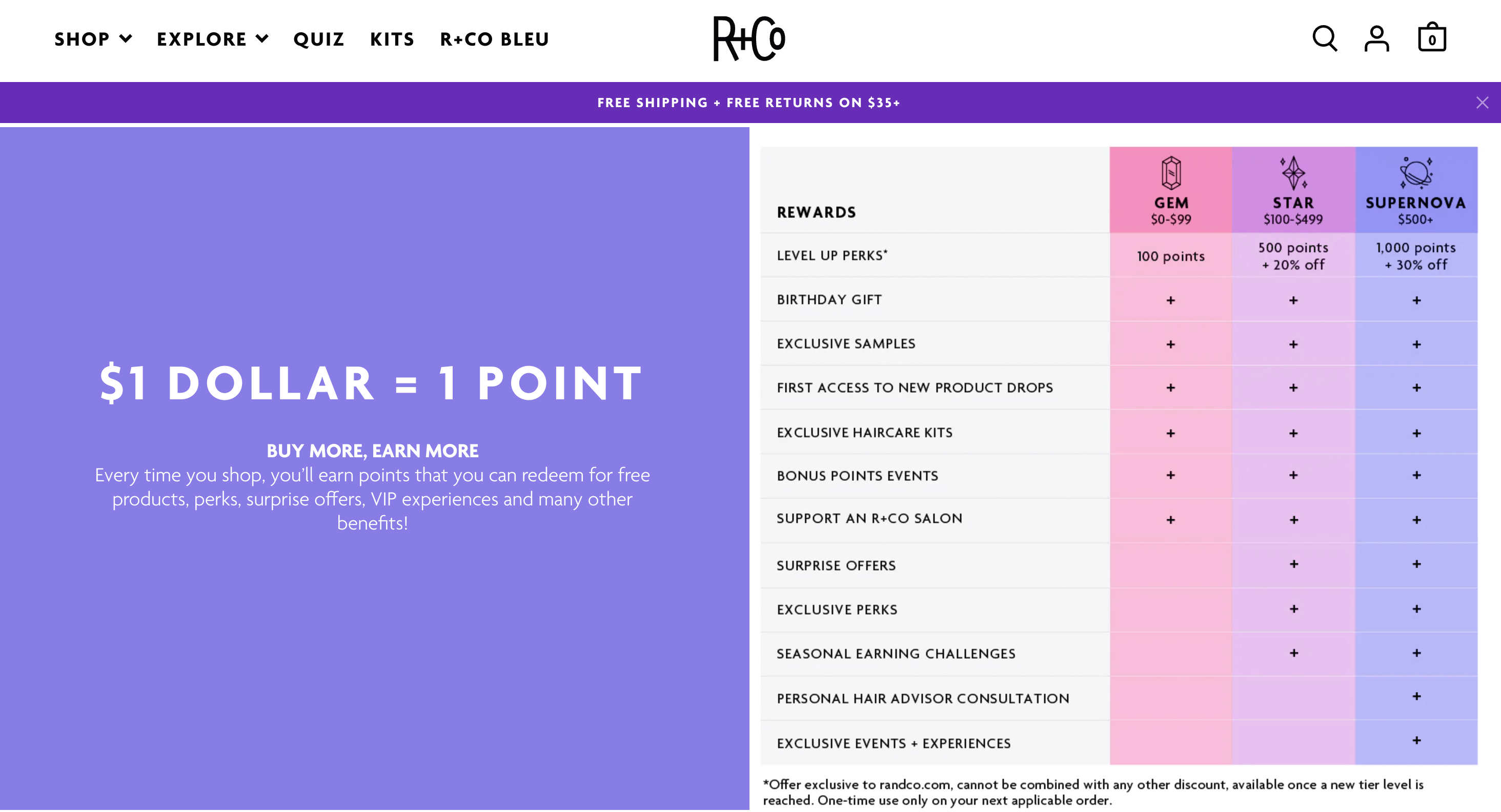
Award-winning haircare brand, R+Co offers its customers rewards that they simply can’t get anywhere else. As a collective of some of the world’s most impressive hair stylists, the brand sticks out for its status as much as its products. This is why some of its experiential rewards reserved for top-tier VIP customers are so appealing. Haircare fanatics are motivated by the chance to earn a personal hair advisor consultation from one of the best in the industry or attend an exclusive event or experience. R+Co understands what its target customer values and that’s what makes its reward program different from its competitors.
Pro: they help you build strong relationships with your customers
Being able to build strong relationships with your best customers is perhaps the biggest advantage of using experiential rewards. The best way to do this is by building a VIP program that offers one-of-a-kind experiential rewards to your best customers. This promise of additional value will motivate every customer to spend more to gain more, increasing program engagement and sales.
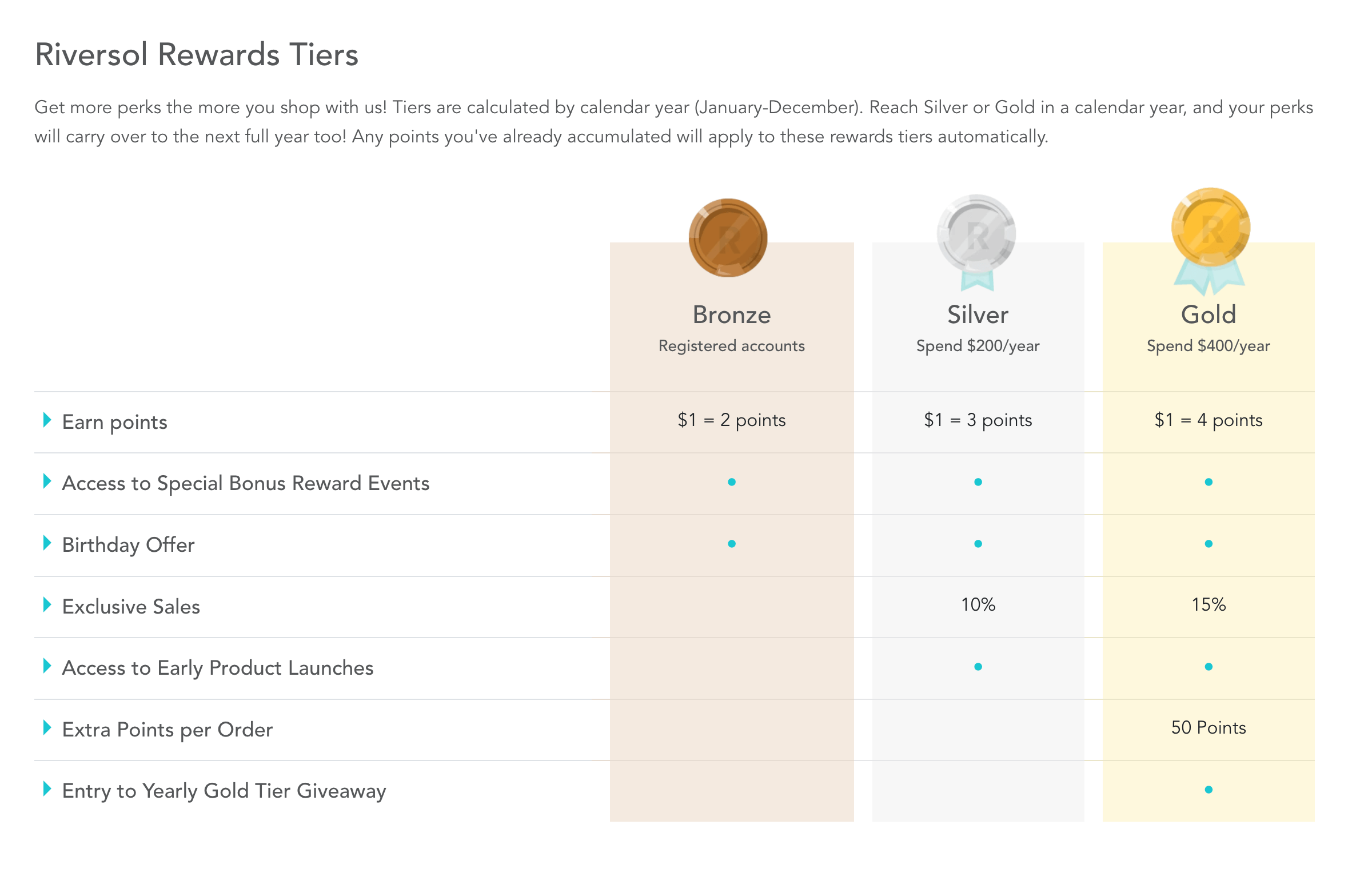
Riversol uses VIP tiers to provide its top customers with access to special bonus reward events, exclusive sales, early access to product launches, and entry to its yearly “Gold Tier Giveaway”. This allows them to retain their highest-paying customers and motivates customers to move up through the ranks by earning more points.
Con: they’re not automated
The primary downfall of experiential rewards is that they require more manual processes than transactional rewards. They are harder to automate since they are personalized, and as a result, will require more effort from your end. To illustrate this point, think about the time involved in setting up a meet-and-greet event versus letting your points program run on autopilot.
These considerations are important to keep in mind when designing your rewards program, regardless of how many advantages experiential rewards have.
Con: their value isn’t tangible
Another limitation of experiential rewards is that their tangible value may appear to be lower than that of transactional rewards. Consider when you walk into a store and go to buy a product — you extract a lot of information about the products you’re looking to purchase from the price tag. As a result, your experiential rewards need to be positioned in a way to show off their true value, since it’s easier to explain what a $15 coupon is worth than an invitation to an event.
Should you use transactional or experiential rewards?
While this shouldn’t come as a surprise, we recommend incorporating both into your rewards program! Offering both transactional and experiential rewards allows you to automate and differentiate.
Using both types of rewards allows you to have an automated rewards strategy while still delivering a personalized experience that sets you apart from competitors. Transactional rewards are easy to automate and should be used to reward every customer, whereas experiential rewards require manual processes and should mainly be used to reward your top customers.
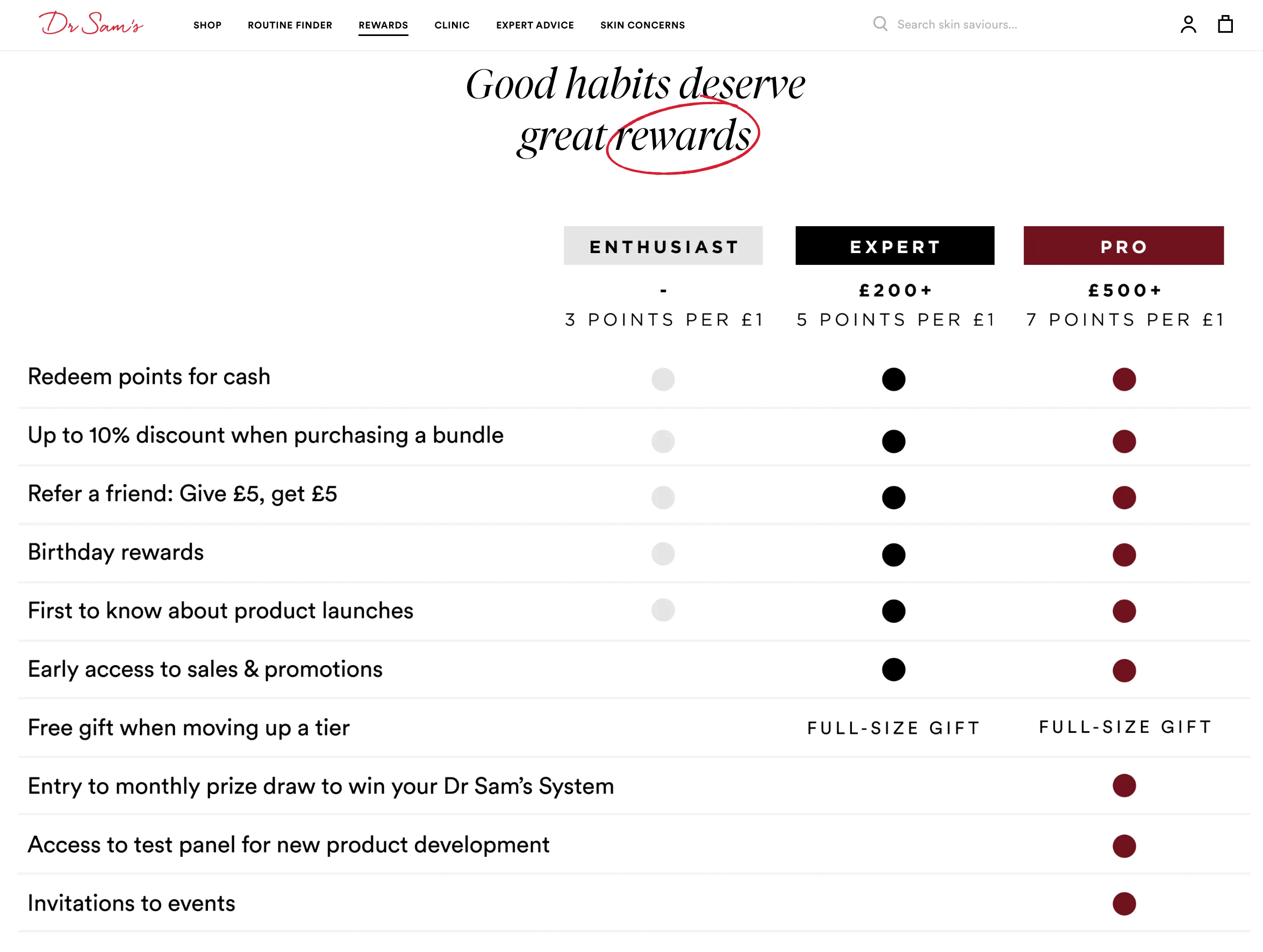
Skincare brand, Dr. Sam’s combines the best of both worlds by offering transactional rewards to all customers and experiential rewards to higher tiers only. New customers start as “Enthusiasts” and are offered rewards that run on autopilot such as store discounts or birthday rewards. This allows more time to focus on retaining “Experts” and “Pros” with tailored experiential rewards such as early access to sales and promotions or invitations to test panels for new product development.
With these tips in mind, how will you incorporate transactional and experiential rewards into your program?











